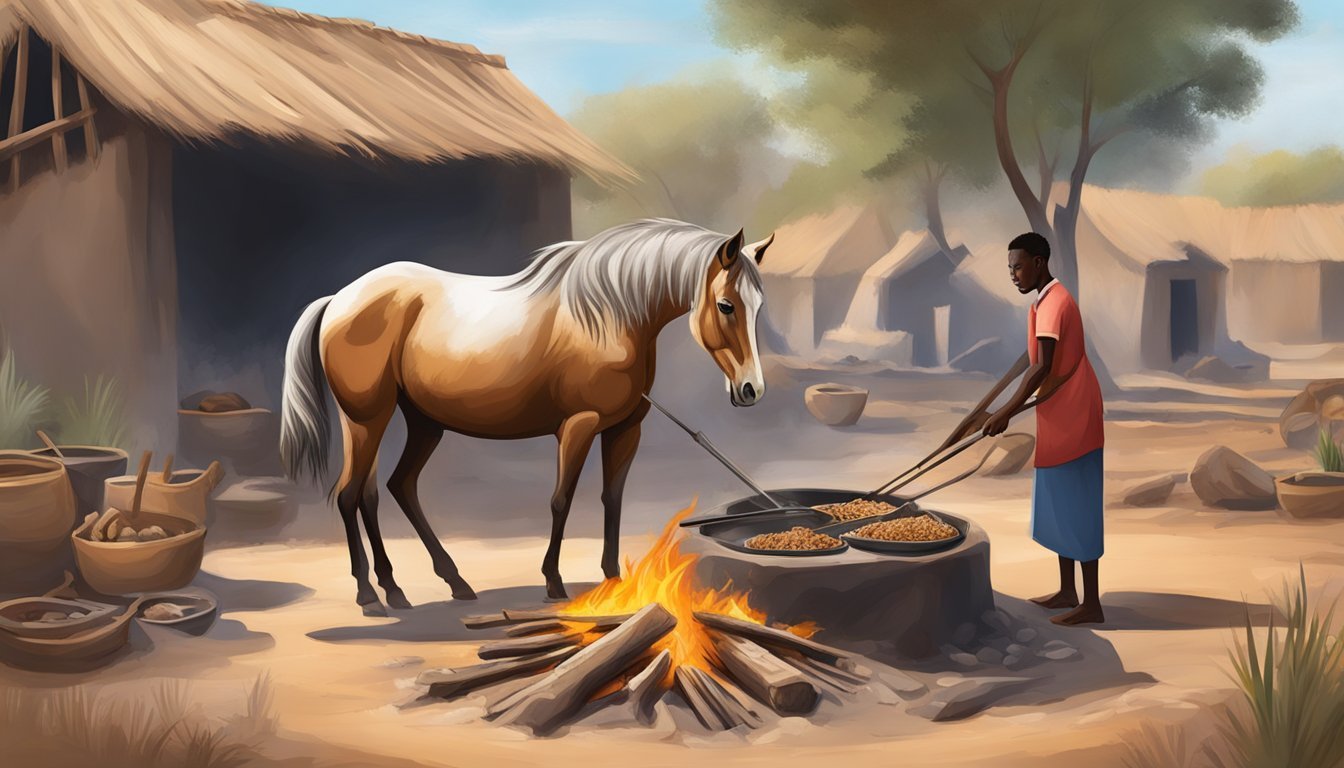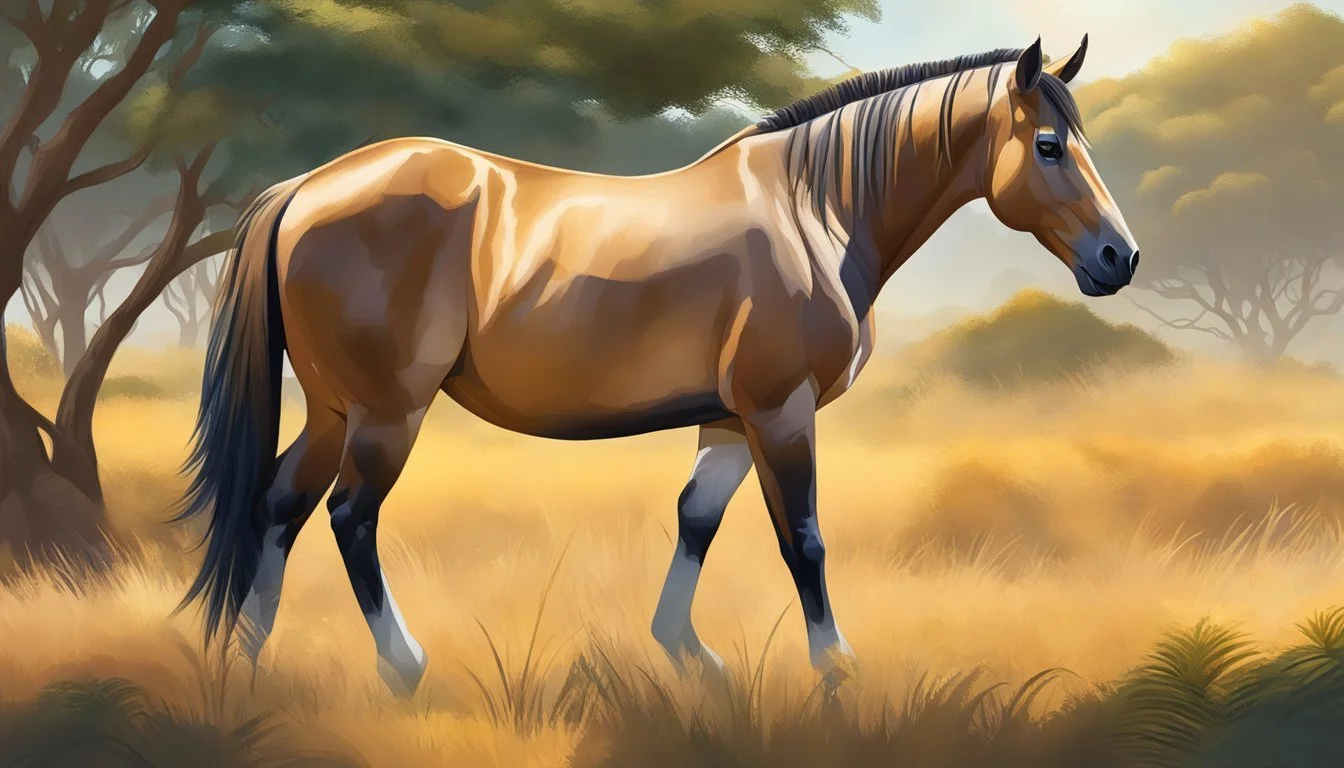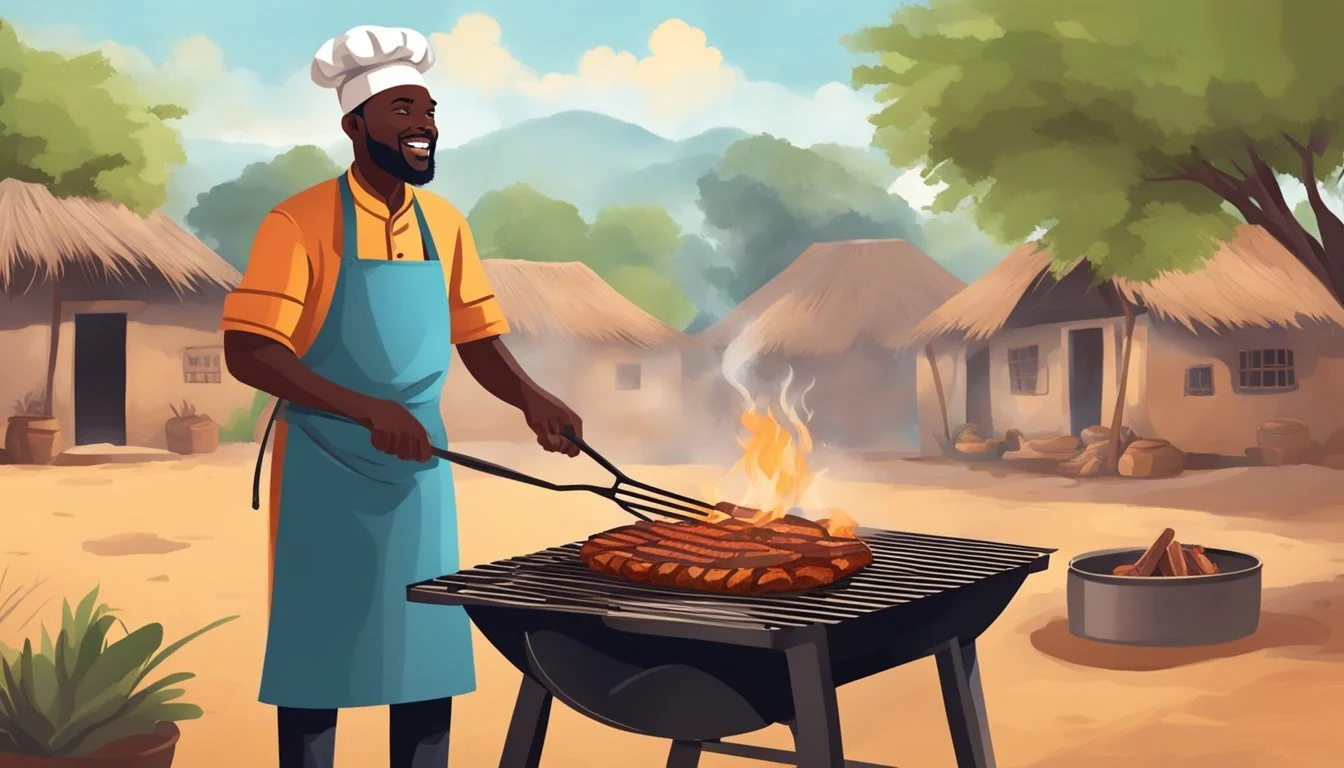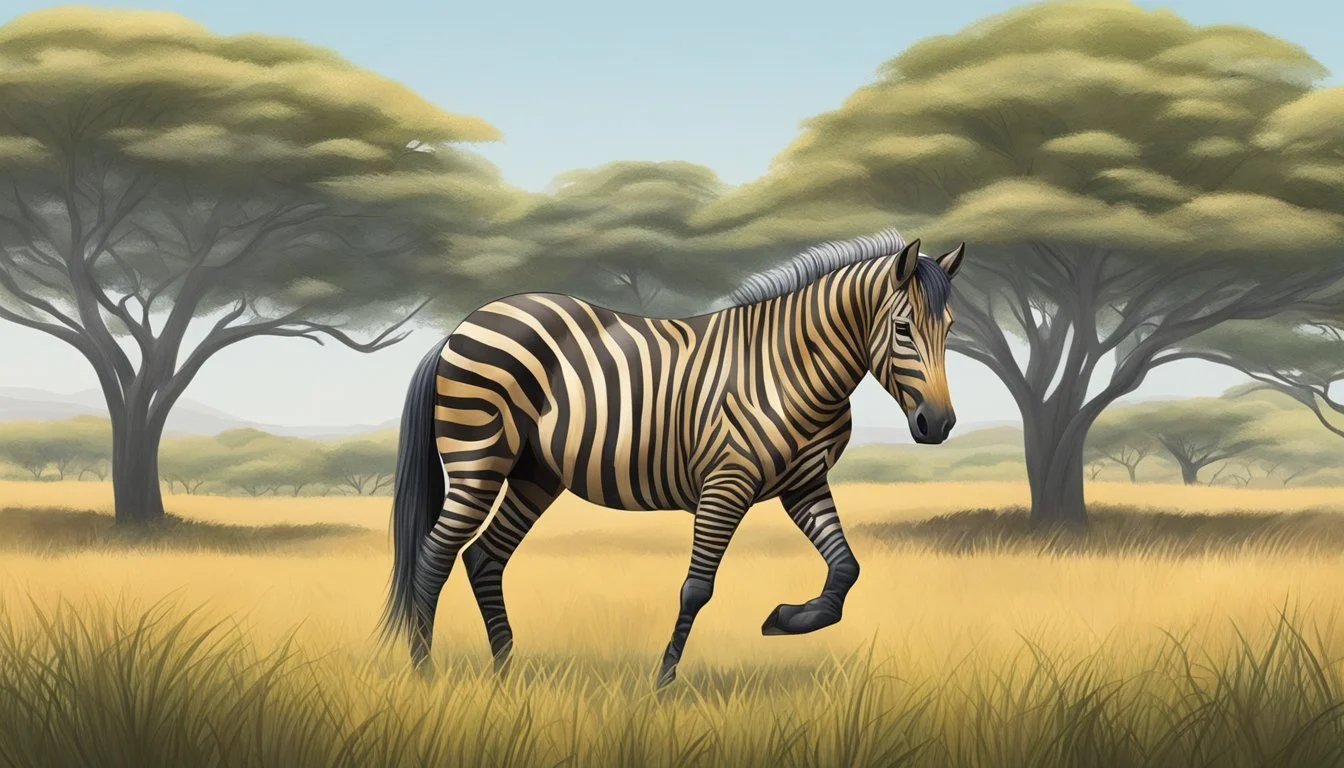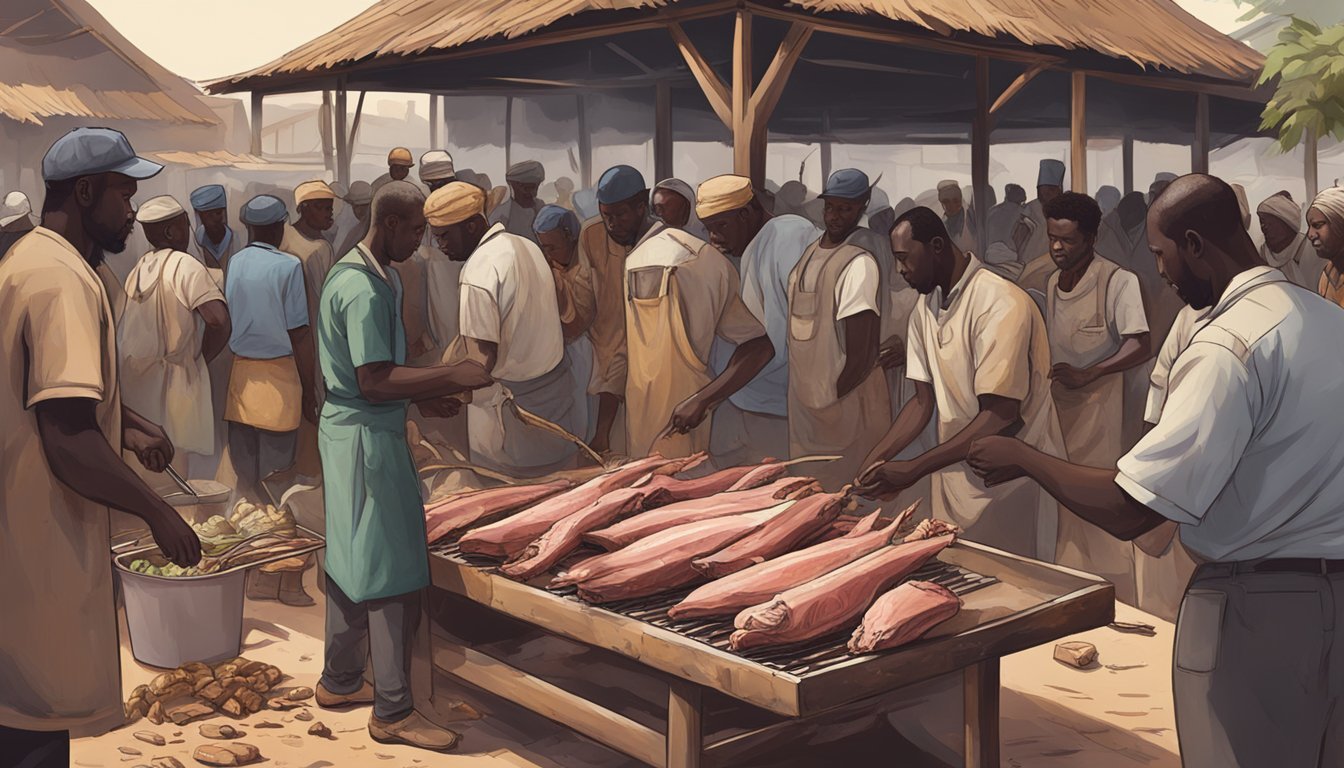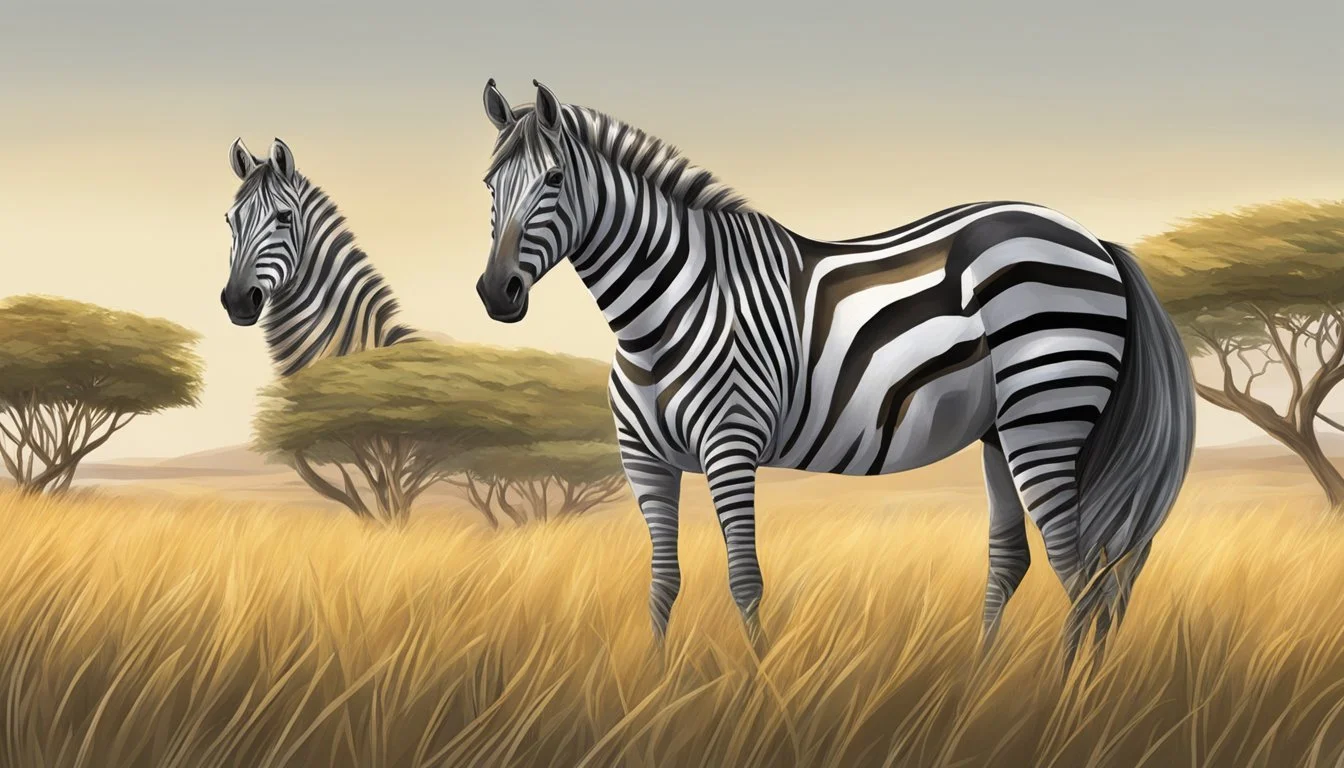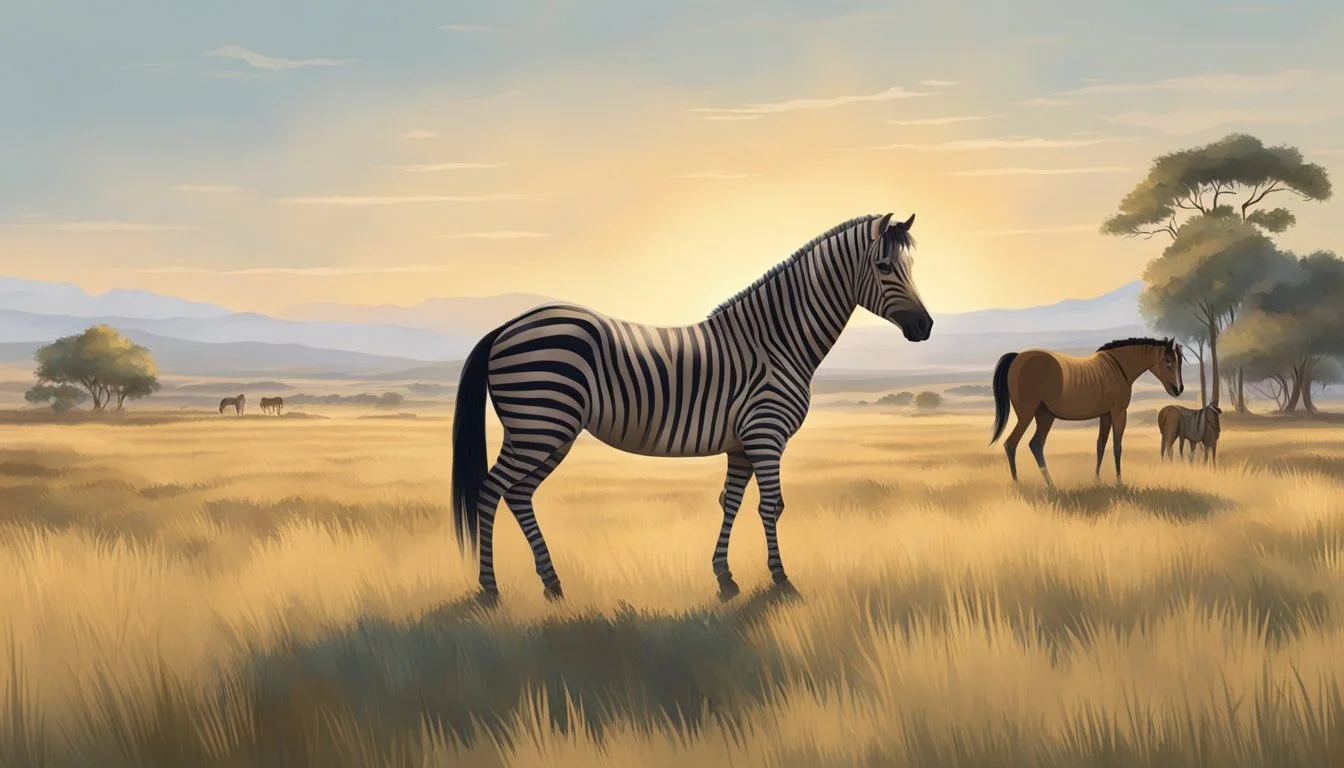Zorse Meat Consumption
Delving into Africa's Hybrid Culinary Tradition
A zorse is a hybrid animal, created by the union of a zebra stallion and a horse mare. This blend of equine genes yields an offspring with physical characteristics of both parents, such as the distinctive stripes of a zebra and the body structure of a horse. In some parts of Africa, the meat of the zorse is consumed, although it remains a niche and relatively uncommon food source. The practice of eating zorse meat is not widespread and is often steeped in cultural traditions specific to certain communities.
As a hybrid, the zorse is not found in the wild. Instead, it is bred specifically by people who bring together the parent species. While the consumption of zorse meat is relatively rare, the hybrid itself serves as a unique example of genetic possibilities within the equine family. In the regions of Africa where zorse meat is part of the dietary customs, it is regarded just like any other type of game or livestock meat. It is important to note that the specific nutritional value and taste profile of zorse meat is shaped by the animal's unique genetic makeup and the conditions in which it was raised.
Understanding the Zorse
This section provides insight into the zorse, a unique equine hybrid, from its definition and traits to its place within the animal kingdom.
Defining a Hybrid
A zorse is an animal hybrid resulting from the crossbreeding of a male zebra and a female horse, known as a mare. Hybrids like the zorse are typically sterile, meaning they cannot reproduce. An example of another well-known hybrid is the mule, which is a cross between a male donkey and a mare.
Zebroid Characteristics
The zorse is a type of zebroid, which is a general term for any zebra hybrid. They exhibit a blend of physical traits from both parent species. Zorses inherit the iconic stripes of a zebra, often most visible on their legs and body, combined with the size and shape more akin to that of domesticated horses. Generally, their build is hearty and robust, equipping them well for survival in various habitats.
Trait: Size, Description: Typically stand 4 to 5 feet at shoulder
Trait: Appearance, Description: Muscular build with a blend of horse and zebra features
Trait: Stripes, Description: Visible on legs, neck, and hindquarters
Zorses in the Animal Kingdom
Zorses occupy a unique position in the animal kingdom. They are not typically found in the wild as they are the result of selective breeding by humans. Since their zebra ancestors evolved in Africa where they had to evade predators, zorses may exhibit heightened vision and alertness. However, unlike purebred wild horses or zebras, zorses do not have a specific habitat they are associated with and are usually kept in controlled environments similar to those of other domesticated equines.
Zorse Meat Consumption
In some regions of Africa, zorse meat is a part of the diet, valued for its protein content and considered a viable alternative to more traditional meats.
Dietary Role in Africa
In parts of Africa where zorses are found, the hybrid animal's meat is an occasional part of the human diet. Zorse meat is consumed due to its availability and is considered by some to be a lean source of protein with a lower fat content. Its consumption is regional and not widespread, often overshadowed by the preference for other local meats such as beef and pork. However, where it is eaten, it can play a role in the dietary practices of certain communities.
Comparison to Other Meats
Protein Content: Zorse meat has a high protein content, making it comparable to that of beef and pork.
Fat and Cholesterol: It is typically leaner, with less fat and possibly lower cholesterol levels, which could contribute to a healthier diet when consumed in moderation.
Taste Profile: The taste of zorse meat is reported to be similar to that of horse meat, which is described as slightly sweet and gamey.
Meat Consumption Considerations: Despite the potential benefits of zorse meat, its consumption is limited and often influenced by cultural preferences and the availability of more popular meats like beef or pork.
Consumers often choose meats based on a combination of taste, health considerations, and cultural habits. In the regions where zorse meat is eaten, these factors will influence its role in the diet as either a primary source of protein or a less common addition to the food culture.
Cultural and Historical Context
Zorse meat consumption must be evaluated within its broader cultural and historical context, including global attitudes towards horse meat and the specific practices in Africa.
Global Perspectives on Horse Meat
Europe: In many European countries, horse meat has shifted from necessity to delicacy over centuries. In France, horse meat, known as chevaline, has been consumed since Pope Gregory III's edict against horse meat in 732 led to its decline. Despite this history, today it can be found in specialized butcheries, especially in Paris. Italy and Germany also partake in the consumption of horse meat, though the practice varies regionally.
Asia: Countries like Kazakhstan, Mongolia, and Kyrgyzstan have a long tradition of horse meat consumption, tied strongly to their nomadic heritage. In these regions, it is neither taboo nor illegal. Meanwhile, in China and parts of Central Asia, horse meat remains a common part of the diet.
Americas: Horse meat consumption in countries such as Mexico and Canada exists, but the United States shows a general stigma against it, heightened by scandals related to its production. Historically, horse meat was not uncommon in America, especially during times of war.
The Africa Story
In Africa, the eating of zorse meat is not widespread and remains relatively undocumented in the culinary history of the continent. However, there are anecdotal reports of zorse meat being consumed in certain cultures within Africa where hybrid animals are bred. The practice is closely tied to the availability of zebra and horse breeds necessary for creating a zorse.
Historical Significance
History: The consumption of hybrid animals like the zorse ties into a longer historical tradition of utilizing the entire animal for various purposes. In cultures where horses and zebras are domesticated and utilized for labor, the consumption of their meat can be seen as an extension of this utilitarian approach.
Stigma: Societal attitudes towards eating hybrid animals like the zorse are colored by global perspectives on horse meat. Where the consumption of horse meat carries a stigma, the eating of zorse meat is likely subject to similar societal pressures. Conversely, in regions without such taboos, zorse meat might be more accepted.
The consumption of zorse meat reflects a complex interplay of cultural norms, availability of animal breeds, and historical practices. Its significance cannot be isolated from the global and local attitudes towards the consumption of its parent species.
Health, Nutrition, and Safety
When considering the consumption of zorse meat, it is crucial to examine its nutritional profile, potential health benefits, as well as the associated risks. Equally important is the adherence to stringent meat inspection and safety standards to ensure it is fit for consumption.
Health Benefits and Risks
Zorse meat is known for being lean and relatively low in fat, which can be a healthier alternative to traditional red meat. It contains a considerable amount of protein, essential for muscle growth and repair. Some suggest that, like horse meat, zorse meat might provide a beneficial balance of omega-3 fatty acids, which are important for heart health and reducing cholesterol levels. However, consumption of zorse meat can carry risks if not prepared or handled correctly, as there is potential for zoonotic disease transmission. It is vital that consumers rely on meat that has passed proper health inspections to mitigate these risks.
Meat Inspection and Safety
Strict meat inspection protocols are necessary to guarantee the safety of zorse meat. Inspections assess the risk of pathogens, spoilage, and contamination. They focus on the entire process, from slaughter through processing, to ensure that hygiene standards are maintained. Zorse meat, like all types of meat, can pose health risks if it is not stored, handled, and cooked properly. To be deemed safe for consumption, zorse meat must be subject to the same rigorous safety inspections as other meats. This ensures that it is free from contaminants that could jeopardize human health.
(Note: Zorse is a hybrid animal and not typically consumed by humans, so this text is crafted as a hypothetical scenario and should be understood as such.)
Culinary Uses of Zorse Meat
Zorse meat, arising from the hybrid of a zebra and a horse, is consumed in some African regions. It's regarded for its distinctive flavor profile and versatility in cooking methods.
Traditional Dishes
In several communities, zorse meat is an integral part of traditional cuisine. It is often prepared as stews, which allows the tough meat to tenderize over a long simmer. These stews feature a variety of local spices and may include vegetables that are native to the region. Sausages made from zorse meat can also be found, being seasoned with garlic and other spices before being sun-dried or smoked.
Modern Culinary Practices
In contemporary African cooking, zorse meat is becoming more experimental. Chefs may create burgers from zorse meat, capitalizing on its gamey yet rich flavor. These burgers are often served grilled, providing a charred texture that complements the subtle nuances of the meat. Steaks cut from zorse are less common, but when they are available, they are typically cooked to medium-rare and can be thinly sliced and accompanied by a sauce, such as one made from reduced soy sauce. Due to its rarity, zorse meat can be considered a delicacy in certain circles, featured in dishes that showcase its unique taste and heritage.
Economic and Environmental Considerations
In assessing the economic and environmental impact of zorse meat in parts of Africa, one must consider both the scale of its industry and the sustainability practices in place. The intersection of these factors influences the viability of zorse meat as a food source.
Zorse Meat Industry Impact
The zorse meat industry is relatively niche, with a limited presence compared to traditional livestock. The cost of breeding zebras and horses to produce zorses can be high due to the specific care and conditions these hybrids require. As a result, farms that invest in zorse production may face unique financial challenges.
Supplier Costs: Suppliers must balance the expense of maintaining hybrid animals with the prices at which the meat can be sold.
Consumer Demand: The market for zorse meat remains small, with limited but noteworthy demand in certain regions.
Sustainability and the Environment
The environmental footprint of farming zorses for meat is a topic that demands scrutiny.
Farming Practices: Sustainable farming practices are crucial for minimizing environmental impact, yet the complexity of raising hybrids can introduce additional challenges.
Slaughter and Economy: The methods of slaughter employed can affect both the local economy and sustainability. Efficient and humane techniques are necessary to ensure an ethically viable product.
Environmental Concerns:
Resource Consumption: Zorses typically consume similar diets to horses, necessitating vast areas of grazing land or quality fodder production.
Emission: Like all animal farming, zorse farms produce emissions; however, their impact relative to other livestock is less documented.
In conclusion, the economic and environmental considerations for zorse meat production are multifaceted, with significant implications for sustainability and viability within the market.
Controversies and Legal Issues
The consumption of zorse meat raises notable legal and cultural challenges across various regions. These challenges stem from legislative discrepancies and deep-rooted societal attitudes.
Legal Debates
In certain African countries where zorse meat is consumed, legal ambiguity exists due to the hybrid nature of the animal. Since zorses are not classified clearly, they occasionally fall outside of standard livestock regulations, creating a legal loophole. The Bureau of Land Management, primarily in the United States, does not oversee zorses as it does with wild horses, leaving a gap in legal governance for these animals when they are present outside the U.S.
Countries often have differing laws concerning hybrid animals. Such gaps can inadvertently allow for the unregulated trade and consumption of zorse meat. In areas where controversy arises, regulatory bodies are called upon to clarify legality and implement standards for the treatment and sale of zorse meat, considering aspects like animal welfare and food safety.
Cultural Controversies
Cultural implications play a significant role in the shaping of attitudes towards zorse meat. In some societies, consuming hybrid animal meat is a taboo or carries a stigma due to cultural beliefs or historical practices. For instance, horse meat itself has a controversial past, evidenced by the horsemeat scandal where products like burgers at establishments including Burger King were found to contain horse DNA, leading to public outrage.
Additionally, there may be ethical considerations surrounding the breeding of hybrid animals, such as zorses, for consumption. Some argue that it is a violation of natural species boundaries. Public figures in the culinary world, like Gordon Ramsay, have yet to endorse such meats, potentially due to these controversies, further affecting public perception and contributing to the decline in acceptance of such food sources. The lack of celebrity endorsement often reflects wider societal attitudes.
Despite the debates, no international edict currently standardizes the legality or acceptance of zorse meat, leaving the matter subject to national or regional jurisdiction and cultural norms.
Conservation and Ethical Aspects
The consumption of zorse meat raises significant concerns regarding wildlife management and ethical considerations, particularly when addressing the sustainability of hybrid species and their welfare.
Wildlife Management
Zorses, a hybrid between a zebra stallion and a horse mare, exist at the intersection of wild and domesticated spheres. They are not a naturally occurring species and, thus, do not fall under traditional wildlife conservation efforts. However, considerations around their management are crucial. The Bureau of Land Management oversees the welfare of wild horses, but with zorses falling into a gray area, clear regulations are often lacking.
Conservation: Zorses may compete with wild species for resources, potentially disrupting local ecosystems. Conservation efforts must balance the impact on wild populations, color variations in natural habitats, and the potential genetic flow between wild zebras and domesticated horses.
Domesticated Care: When zorses are kept in captivity, such as in zoos or as pets, they require specific care that respects both their horse and zebra lineage. This includes understanding a zorse mare's needs and acknowledging the unique behaviors inherited from the zebra stallion.
Ethical Considerations
The ethical implications of consuming zorse meat are multifaceted, encompassing both animal welfare and ecological impact.
Animal Welfare: These hybrids often inherit traits from both their zebra and horse parentage, requiring an enriched environment that neither a purebred horse nor a zebra would typically need. The suitability of zorses for work, and the ethicality of their use in such a capacity, is also debated. Their unique needs raise concerns about the moral defensibility of their domestication and consumption.
Ecological Ethics: Ethically, the breeding of zorses for consumption must be measured against the impact on biodiversity. As they do not exist in the wild, their production raises questions about the use of both zebra and horse populations for the creation of hybrid animals, potentially undermining conservation aims for these species.
It is the responsibility of those involved in the breeding and potential consumption of zorse meat to consider these conservation and ethical complexities, ensuring that their practices are sustainable and humane.
Future of Zorse Meat
As Zorse meat becomes a topic of interest, two main factors will play a role in its future: technological advancements in meat production and shifts in consumer preferences.
Advancements in Meat Production
In the realm of meat production, technological progress is aimed at increasing efficiency and sustainability. Given that Zorse is a hybrid animal, researchers seek ways to improve the quality and yield of meat through controlled breeding programs. Scientific innovations may lead to a higher protein content and better nutritional profile in Zorse meat. Moreover, advancements may also result in reduced environmental impact of meat production, aligning with global trends towards eco-friendly diets.
Changing Consumer Preferences
Consumer preferences are steadily evolving, with a growing emphasis on novel and sustainable protein sources. Although Zorse meat is not widely consumed globally, changing diets could open doors for its acceptance, driven by curiosity and the push for diverse protein options. As consumers become more knowledgeable about their dietary impacts, traditional meats may witness competition from unconventional sources like Zorse meat due to their potential lower carbon hoofprint and demand for new culinary experiences.
Through these changes, the demand for Zorse meat may be affected by both its potential benefits to the diet and trends in consumer trends towards more ethical and varied sources of protein.


